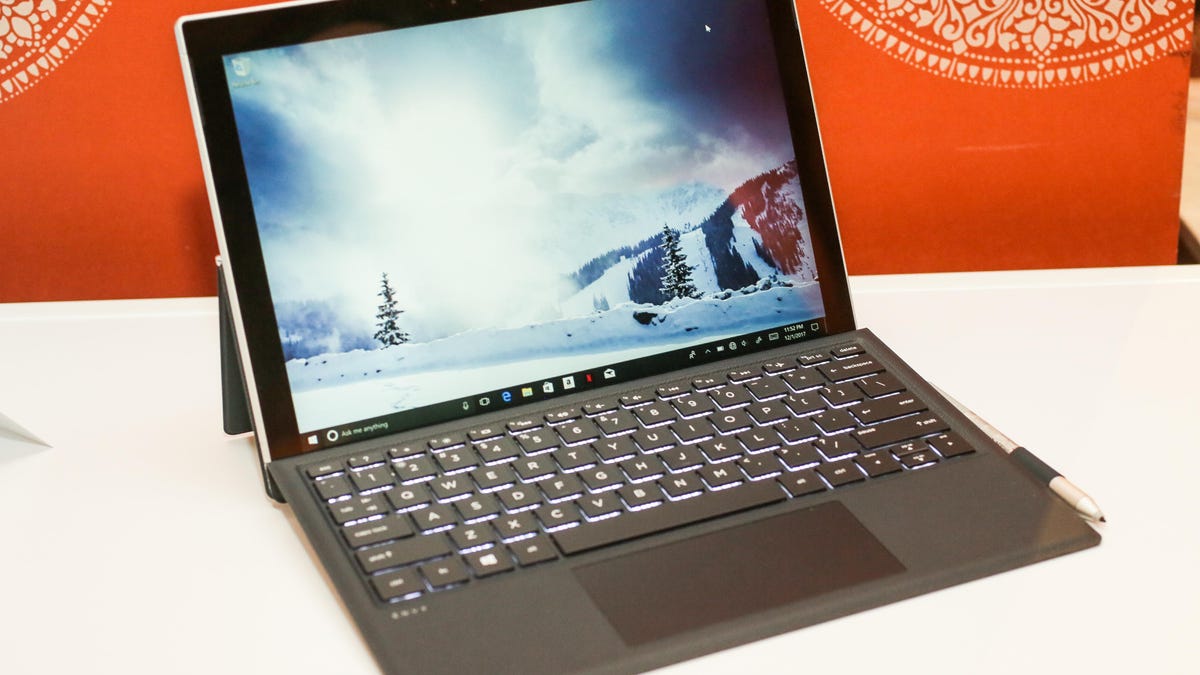CES 2018 PC preview: What to expect from laptops, desktops and tablets
From hybrid designs to hybrid components, everyone is taking an expansive view of what makes a PC.

While it doesn't always garner the major headlines and once-a-year buzz of new big-screen televisions, the annual CES trade show is also big for the computer industry, with dozens of new laptops, desktops, tablets and 2-in-1 hybrids announced. Brands such as Dell, Lenovo, Acer, Asus, HP and others use CES to launch new products, and we sometimes even get to see some fun prototypes and concept pieces, such as Razer's triple-screen laptop from last CES.
For such a mature category, major breakthroughs are few and far between, but this year, we're seeing some big new ideas about the components that make PCs run, which could lead to thinner, less-expensive laptops with better battery life -- and who doesn't like that idea?
Team of rivals: Intel and AMD come together
It's the team-up no one thought would ever happen. Intel and AMD, CPU-making rivals, are working on a hybrid processor package that combines hardware from both companies. That's because while both Intel and AMD make CPUs, the brains that run your computer, only AMD makes high-end graphics hardware (in that space, AMD's graphics rival is Nvidia).
Intel's new chip with AMD graphics.
These new combo chips, technically part of Intel's 8th-gen Core i series, use Intel CPUs and AMD Vega graphics, in a very small package that can fit into very thin laptops. It's not going to be as powerful as a full gaming laptop, but it's an interesting way to add GPU power for 3D and video editing work, and some gaming, without killing your laptop's battery or making it too thick and heavy. Expect to see at least a few early examples of laptops with these new combo chips at CES.
A new contender enters the ring
Nearly all consumer PCs use processors from Intel and AMD. There have been a couple of ARM-based outliers, but these are generally low-cost, low-power systems that are either entry level Chromebooks, which don't need to actually run much software, or else terrible doorbuster-style budget laptops that have never gotten much traction
Qualcomm, best known as a maker of chips for mobile phones, is getting into the laptop game, offering a new Snapdragon ARM processor that works with Windows 10 devices. The promise is that these new laptops and hybrids will run fast enough to satisfy users, but have greatly improved battery life, in some case up to 20 hours.
We've actually been talking about this concept for a while, and there are even a couple of first-mover systems that have been announced, including the a new version of the HP Envy x2 and new laptop from Asus called the NovaGo.
HP's Snapdragon-powered Envy x2.
Sounds great, right? The catch is that these Snapdragon systems will all ship with Windows 10 S, the limited version of Windows 10 that restricts itself to apps available in Microsoft's own app store. You could upgrade to full Windows 10 and download and install any software you want (Photoshop, games, etc.), but there are no guarantees that software would run well, or at all.
So far, we've seen prices of $600-800 for the initial wave of Snapdragon laptops, and we expect more details at CES.
The 2-in-1 takes over (even more)
This is an easy trend to see. The very first "modern" laptop/tablet hybrid was introduced at CES 2012 by Lenovo, and since then the Yoga series has gone on to become a long-time favorite. The idea of a touchscreen Windows laptop with a folding or detachable hinge was once a rarity, but it's now the default for a big part of every major PC-maker's lineup (well, except for Apple).
At CES 2018, we'll continue to see that trend play out, with more companies using the 2-in-1 design as a default for mainstream and even budget laptops. It won't be part of every laptop, but it'll be in enough that it's almost the new normal.
Stay tuned throughout CES for the latest PC news, including product announcements, hands-on videos and more.
CNET at CES 2018: All the news from the year's biggest tech show
TVs at CES 2018: What to expect in the world of big-screen TVs

